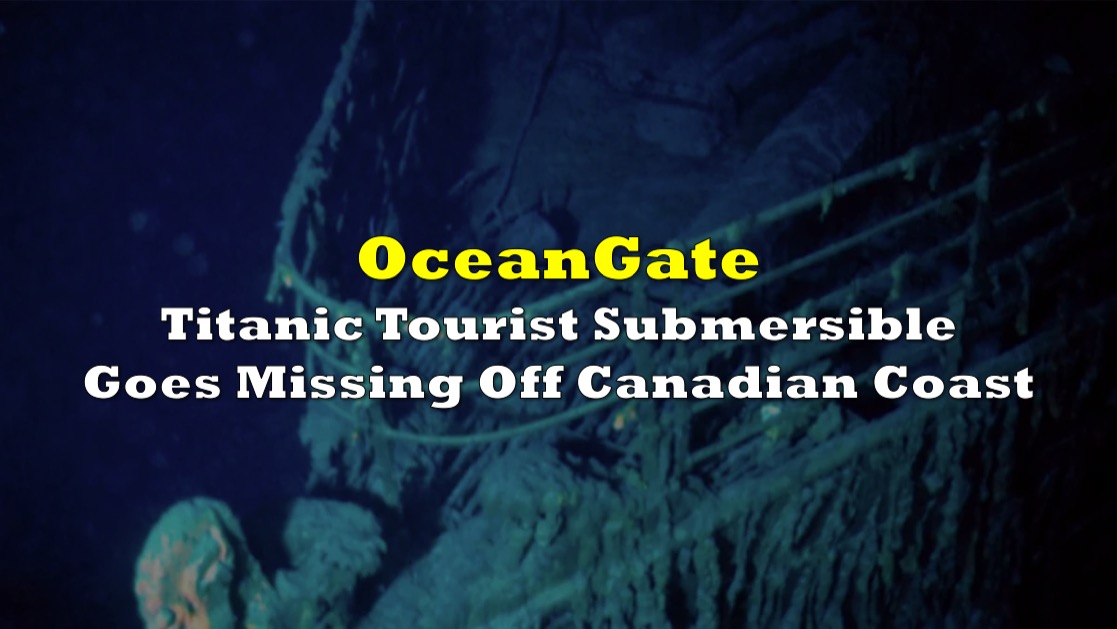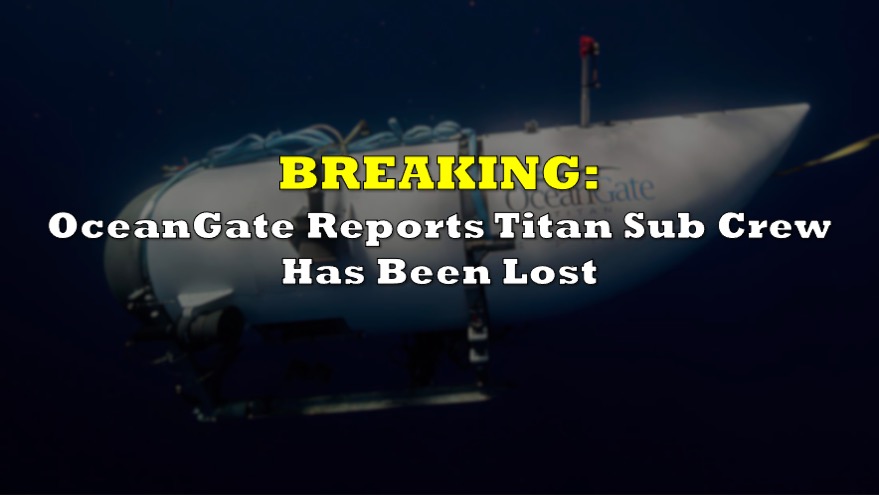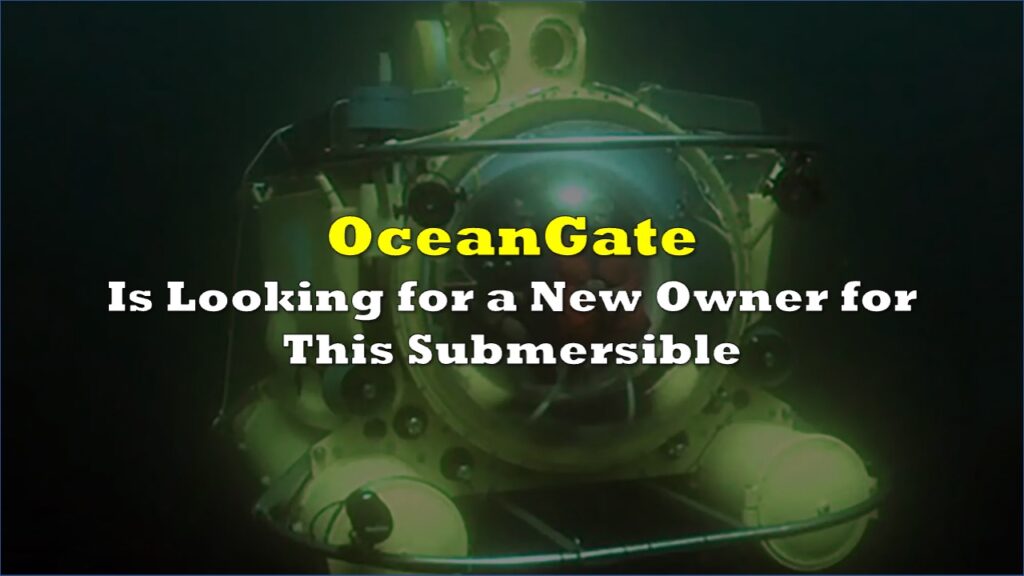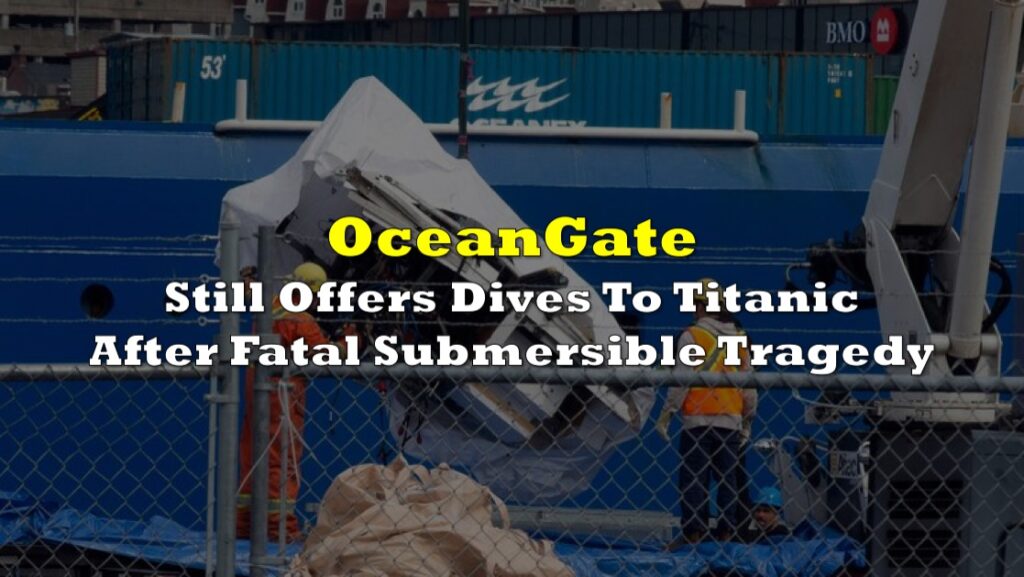A search and rescue operation of significant magnitude is currently underway in the mid-Atlantic as a tourist submarine has gone missing during a dive to the wreck of the Titanic.
The US Coast Guard reported the loss of contact with the small sub approximately one hour and 45 minutes into its dive. The vessel, identified as OceanGate’s Titan submersible, was carrying five individuals on board.
OceanGate, the tour firm responsible for the expedition, has been exploring all available options to rescue the crew members.
The eight-day trip, inclusive of dives to the Titanic wreck at a depth of 3,800 meters (12,500 feet), costs $250,000 per ticket.
The Titanic thing is tragic and horrible, yes, absolutely.
— Cav: Alpha Cure Head (@CombatCavScout) June 20, 2023
But also if you pay $250k to go to the bottom of the ocean and to gawk at the final resting place of a bunch of poor people who were locked into a sinking ship, don’t be surprised when they drag you down to join them.
In response to the crisis, numerous government agencies, including the US and Canadian navies, as well as commercial deep-sea firms, have joined forces to assist with the rescue operation. Despite the distance between the wreck site and the search’s command center in Boston, Massachusetts, officials are coordinating efforts to ensure an efficient response.
The Titan submersible, comparable in size to a truck, typically carries a four-day emergency supply of oxygen.
“We anticipate there is somewhere between 70 and the full 96 hours available at this point,” said Rear Admiral John Mauger of the US Coast Guard.
The search operation involves the deployment of two aircraft, a submarine, and sonar buoys. However, due to the remote location, the operation faces significant challenges.
One of the individuals on board the missing submarine is Hamish Harding, a 58-year-old British billionaire businessman and explorer. Harding had expressed his excitement about being part of the expedition to the Titanic wreck, anticipating that it would be the first and only manned mission in 2023 due to adverse weather conditions.
Billionaire Hamish Harding is reportedly one of the five people on board the missing submarine that was meant to take tourists down to see the Titanic’s shipwreck. https://t.co/3gPA3OZXjs
— The Daily Beast (@thedailybeast) June 19, 2023
OceanGate’s focus remains on the well-being of the crew members and their families, expressing gratitude for the extensive assistance received from government agencies and deep-sea companies.
“We are deeply thankful for the extensive assistance we have received from several government agencies and deep sea companies in our efforts to re-establish contact with the submersible,” the firm said.
With its carbon-fiber construction, OceanGate’s submersible offers participants a chance to step outside the realm of ordinary life and discover something truly extraordinary. The ongoing expedition and two more scheduled for June 2024 demonstrate the company’s commitment to enabling remarkable experiences.
Y’all please watch this. It’s a CBS story that aired a while back about that submarine that is now missing. The creators of that missing submarine are DEEPLY unserious. pic.twitter.com/B6JriITyZj
— Marie, MSN, APRN, FNP-C (@FnpMarieOH) June 19, 2023
Departing from St John’s in Newfoundland, each full dive to the wreck encompasses approximately eight hours, including the descent and ascent. The Titan submersible, one of three owned by OceanGate, possesses the capability to reach depths of up to 13,100 feet and provides 96 hours of life support for a crew of five.
The challenging circumstances faced by the submersible crew and the land crew involve the absence of underwater communication via GPS or radio.

Since its tragic sinking during its maiden voyage in 1912, the Titanic has remained a symbol of human history. The wreckage, extensively explored since its discovery in 1985, is divided into two parts, the bow and the stern, separated by approximately 2,600 feet. Surrounding the broken vessel is a vast debris field.
Notably, last month saw the creation of the first full-sized digital scan of the wreck, utilizing deep-sea mapping techniques. This scan offers insights into the scale of the ship and unveils intricate details such as the serial number on one of the propellers.
Information for this briefing was found via BBC and sources mentioned. The author has no securities or affiliations related to this organization. Not a recommendation to buy or sell. Always do additional research and consult a professional before purchasing a security. The author holds no licenses.









